By Lois Arkin
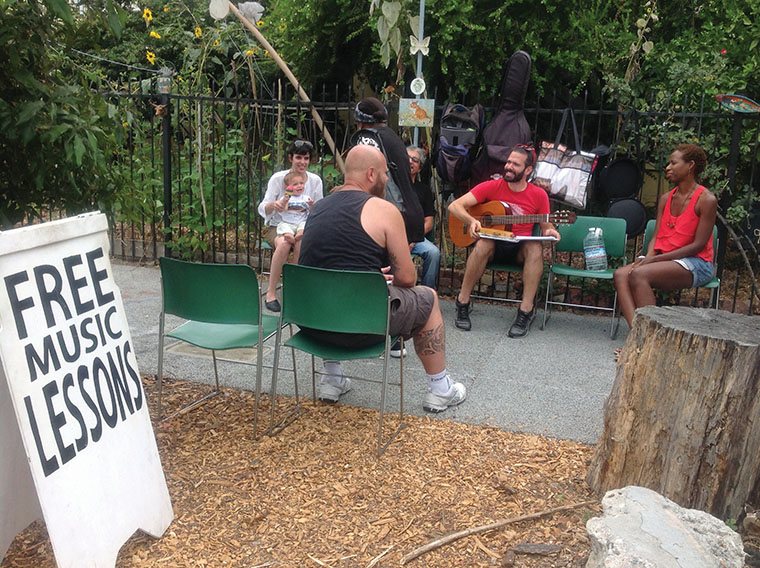
I’m vulnerable. At 83, with the COVID-19 surge, I am told to stay in, get help for my groceries, mask myself before opening my apartment door. Since I plan to live to be 100, and the future incarnations of this and similar viruses are uncertain, I wonder if this will be how the rest of my life will go. How will I maintain a decent social life? Get enough exercise? Intellectual stimulation? Maintain a sense of connection to the neighborhood? I notice my speech slowing, my struggle to find everyday words in conversation. Will my virtual life provide me with sufficient interaction and stimulation to prevent my aging brain from becoming demented?
I am using this seeming COVID-19 time warp to begin making a dent in 40 years’ worth of organizational files and stacks of paper, library and resource materials. My heart sinks as I put article after article, letter after letter, report after report in the round file, stopping to think first if I should scan it for posterity, and, as a follow-up thought, ask myself, “Who else will ever read this stuff?” Simultaneously, I feel a sense of excitement as I put the final touches on a job description to search for an Associate Director for this four-decade-old organization, now rebranding itself from CRSP (Cooperative Resources and Services Project) to the Los Angeles Ecovillage Institute (LAEVI).
Those items going into the round file include material about the contemporary beginnings of the intentional communities movement, the community land trust movement, the co-op movement, the local currency movement, the eco-home movement, conversion of rental housing to limited equity housing co-ops, and on and on the round filing goes. I fantasize that someone will see some fascinating-looking article in our blue recycling bin, figure it came from me, and get excited enough to stop me. Truly wishful thinking. As one of our co-op members told me 20 years ago, when I inquired if they would like a hard copy resource from the CRSP library on a subject they were researching. “Oh, no thanks, everything is on the internet now,” was the response. And so it is, and so it goes.
It is forever and always a trip down memory lane or lack thereof. I startle myself sometimes at how creative I was, how attentive to detail I was, and how often I saw things that seemed so natural to me, but others called visionary. When others would comment on “my achievements,” I’d respond, “I don’t know how not to do what I do, and, really, it’s everyone else in this community that has made it happen. I just try to hang onto the vision.” I read things that have my signature on them, but I have no recollection of writing, reviewing, or signing such a document; I smile at my younger self who did.
I have started an “old women’s group” of local environmental activists which now meets monthly online. I find I am not alone as I age, and that collectively we have so much to offer, but then again, for most younger folks, “everything’s online.” And I find that more and more of those young people seek advice and resources from LAEVI, whether for their academic research or a place to live where people know your name and don’t think you’re weird if you compost and ride a bike, and/or because they want to start intentional communities, cohousing, ecovillages. It has been exhilarating to see the awareness and desire for community grow.
What Is “Scaling Up” Anyway?
But has what we’ve been doing, as an urban ecovillage demonstration these past 27 years, “scaled up”? At this same point, even as its primary cofounder, I am personally trying to scale down, while the organization I founded in 1980 is in the process of reinventing itself to scale up. Sounds crazy, huh?
On the other hand, it may depend on how one defines “scaling up.” For the curious, it’s worth doing a search for the definition of “scaling up.” Are we in the “franchising” business for ecovillages? Do we see ourselves as replicable models? Or rather as simply demonstrations of what a group of people in congenial relationships with a shared vision do or plan to do to improve their quality of life, while reducing their environmental impacts in a geographically discreet area?
Mostly, I don’t believe that ecovillages are models that can be replicated. The success of an ecovillage depends on a unique group of people, the skills, knowledge, and dreams each brings to the venture, the relationship the group has to the problems with the life support systems in a given bioregion, how the group relates to its potential neighbors and to its political jurisdiction. Ultimately, if they live their “demonstration” in any kind of a public way, they will have powerful influence on their visitors, neighbors, and through the public media they attract. So it has been with L.A. Eco-Village, and so many other ecovillages across the country and the world: Ecovillage at Ithaca, Earthaven Ecovillage, Dancing Rabbit, Findhorn in Scotland, BetZed in London, Crystal Waters in Australia, to name a few of the more prominent urban, suburban, and rural ecovillages.
So how has our experimental demonstration in urban sustainable community development fared since its beginnings in 1993? Note first that Los Angeles Eco-Village is a place name where the 40-member LAEV intentional community makes its home in three multi-family buildings within an intensely urban two-block neighborhood of 13 multi-family buildings housing approximately 500 people. Three nonprofit organizations form the legal framework for the intentional community and its properties: the Urban Soil-Tierra Urbana limited equity housing co-op, the Beverly-Vermont Community Land Trust, and LAEVI (the initial and ongoing organization for new development in the neighborhood). The community’s group of small home-based businesses and various activity centers such as tool shop, art studio, gardens, gym, food co-op, bicycle shop add to the resilience of the community.
What Kind of Influence Has Emerged from L.A. Eco-Village These Past Few Decades?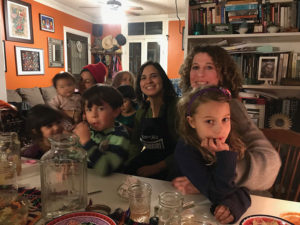
More than a dozen former LAEV intentional community members have taken lessons learned and started their own eocvillages, eco-co-op houses, or neighborhood retrofits, both here in L.A. and in other parts of the state, the country, and the world. Those who have come for short visits and extended stays, too, and/or just on a three hour tour, have been inspired to start similar intentional communities or neighborhood retrofits in parts far and wide. Watch for a future article about their take-aways from LAEV.
The City of Los Angeles Planning Department included LAEV in its Housing Policies as one of its programs back in 1998; our former City Councilman and now current mayor of Los Angeles dedicated our shared street project back in 2008. Today there are many shared streets, open streets, pedestrian streets, bicycle streets, traffic calming initiatives—both by regulation and by neighborhoods simply taking over their streets for longer and shorter periods of time. Thanks to Eco-Villager Joe Linton and the StreetsblogLA that he edits, there is ongoing reporting, discussion, and progress in these areas across the city that we were among the first to begin demonstrating in the early 1990s.
Even 10 years ago, Los Angeles had no network of shared co-op, environmentally sensitive housing. A few years ago, I organized a small informal network of eight or 10 such communities. Today, an organized network of more than 20 such houses meets quarterly to share stories, best practices, and resources. Several are influencing their neighbors in mostly intensely urban neighborhoods as they grow their community friendships.
Twenty years ago when I asked our tour groups, “Who here is familiar with ‘permaculture’ [or ‘cohousing’ or ‘intentional communities’ or ‘ecovillages’] before finding your way here today?,” folks would look at me quizzically. These words were not even on most people’s radar. Today those interested in sustainability, resilience, the circular economy are usually familiar with these terms, even if they cannot define them off the top of their head. In fact, more often than not, tour participants have found us because of their internet searches with those words.
(For those who like to get confirmation from the internet, a Google search for “intentional community” now yields over 75 million results, “permaculture” nearly 18 million, “ecovillage” over four million, and “cohousing community” over two and a half million.)
Even five years ago, people in our tour groups were simply “the curious” and/or looking for affordable housing for themselves, or doing academic research, or were dragged along by a friend or relative. Today, about one-third to one-half of folks on our tours of usually 10 to 20 persons (held two to three times a month before COVID-19; in-person tours are currently on hold) have come because they plan to start an ecovillage, an eco-neighborhood, cohousing, or shared-house intentional community—not including the occasional professional and academic tours that come to explore our demonstration for their academic and public policy considerations. But all of these folks are on the cutting edge of society, and so LAEVI is stepping out on that edge with them. We are expanding inclusivity to all kinds of folks who want to live more cooperatively and more ecologically, whether they use the common terms in our communities movements or just want to adapt some of our systems to their particular neighborhoods or communities.
About Our Future and Those Big Corporate Architects and Engineers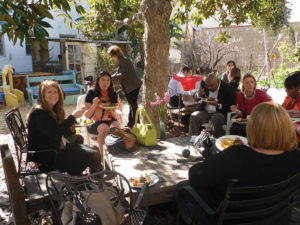
“Whoo! You wanna what?,” I inquired in amazement a few years ago when a few months after coming on one of our public tours, an enthusiastic engineer from one of the world’s prominent engineering firms, BuroHappol, indicated that a small team at his firm wanted to help design the eco-retrofitting of LAEVI’s then-recently acquired new property (a quarter acre site with a former auto shop and café on it, adjacent to our large building on the north end of the LAEV neighborhood) and that their services would be donated via their internal grant system! That engineer, Gideon Susman, later became one of LAEVI’s board members, resigned from the firm, and came to live in LAEV for awhile.
Word travels in those circles and not too long after the BuroHappold work was in process, a small team, led by Ashley Stoner of the internationally prominent architectural firm Perkins and Will, wanted to continue that work, also on a pro-bono basis, initially redesigning that same quarter acre site with our LAEVI vision for it. To do that, the firm held a half-day rapid redesign workshop with all 100 of its Los Angeles staff. Known as a charrette, the workshop yielded a colorful 22-page brochure of the group’s designs. By late 2019, the small teams from the two firms wanted to continue this work together to design the retrofitting of our nearly 100-year-old whole two-block neighborhood to a vision they are calling LA2050, with our input. By the time this story is published that neighborhood retrofit redesign will have been presented during a forum at the US Green Building Council’s 2020 Annual Municipal Green Building Conference & Expo.
So, urban ecovillages, and their most basic ecological, economic, and social systems, may get a big boost this year, at least among green building professionals. Members of the BuroHappold and Perkins & Will teams emphasize the fun they’re having working on this “tiny” project because most of their professional time is spent on huge new development projects.
Here are a few things that might be included in that future retrofit design:
● An urban teaching farm (even now a dozen-member group is ready to make progress on this when COVID-19 is a bit more under control)
● Geothermal energy
● Neighborhood solar
● The acquisition and retrofit of the dozen other multi-family buildings in the LAEV two-block neighborhood
● Eco-co-op hostel of 10 tiny houses
● Small green business incubator and coworking spaces
● Community Hub with larger community venue space
● Three more cohousing communities
● Urban forest and orchard
● Research center for remediation of toxic soils
● Car-free streets in our two-block neighborhood
● Biological living machine for grey and black water
Scaling Up while Scaling Down, or What We Need to be Doing with Inherited Wealth!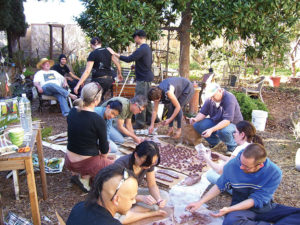
Why is CRSP, the nonprofit organization I founded in 1980 to be a training, education, and development center for all kinds of co-ops, rebranding to LAEVI (Los Angeles Ecovillage Institute)? Because clearly, several other organizations in the Los Angeles area, nationally, and internationally have become resources for developing co-ops of all kinds: housing, worker, consumer, producer. Co-ops are sexy today, as they have been traditionally over the past 100 years or so during economic recessions and depressions. Co-ops are included in the Green New Deal, and there is even an embryonic “Cooperative Party” in the US, though it is a longstanding group in the UK.
At the same time, personally, I’m trying to “scale down,” which may be a bit of a roller coaster for a while since, as a board member of LAEVI, along with the rest of my board, we are planning on “scaling up” or reinventing our organization to be an education and research center for urban ecovillages. A big problem for ecovillages and intentional communities for founders like me is that I have been a volunteer for this organization’s 40-year history, living through periods of extreme poverty, credit cards, small stipends here and there, and family gifts on special occasions—and then inheriting quite a bit of money when my parents passed on. But parents were always there for any emergency needs; knowing that, I struggled on.
Some of us face the issue of being white and privileged, and how to use that privilege to help make a better world. This is a great challenge in these times. But it is also a time that great wealth will be (or has been) passed on to many Boomers, GenXers, and even Millennials. As the effects of Climate Change accelerate the degradation of our life support systems, becoming an ever-increasing threat to all of us, will we see that wealth put to good use in demonstrating changed living patterns worldwide? In healing the degraded ecosystems that so much of that inherited money contributed to? In doing planetary reparations? Or will that wealth, too, continue to feed an ever expanding consumer culture to its ultimate death and perhaps the death of us all or at least most of us?
And What Will Become of Me Personally?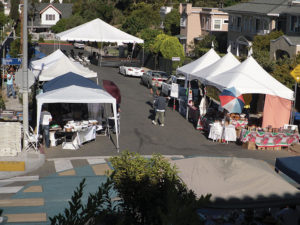
As I personally scale down, my board and I are also on the search for an Associate Director who can assume some of our organizational responsibilities and take LAEVI to the next level. This will be an exciting opportunity for the right person, being that our new commercial property is highly visible, will be the Los Angeles Eco-Village Community Hub, and ultimately will include an urban teaching farm, ecovillage/resilient neighborhoods educational center, small green co-op business incubator, a special event venue, café, and eco-co-op hostel made up of 10 tiny houses, along with being a research site for remediating brownfields.
That defines a little bit more about why I plan to live to be 100, hopefully sitting in a rocking chair in the middle of the street (that has become a public plaza), and holding court with whoever wants to stop by and chat with an old lady about how this all came to be. And, of course, being as place-based as I’ve become, by that time, it will be cool to bury me directly into the earth in our courtyard gardens, no coffins, please; just me and the worms!
Lois Arkin is cofounder of Los Angeles Eco-Village and 40-year resident of the LAEV neighborhood, board member of GEN-US, former board member of the FIC, former editor of Communities’ “Ecovillage Report” column, board member of the Global Village Institute, former member of the Community Advisory Board for the former Los Angeles Community Redevelopment Agency, and author or coauthor of numerous articles and two books, Sustainable Cities: Concepts and Strategies for Eco-City Development and Cooperative Housing Compendium: Resources for Collaborative Living.
Excerpted from the Fall 2020 edition of Communities (#188), “Scaling Up, Scaling Down” (available here or by subscribing).
